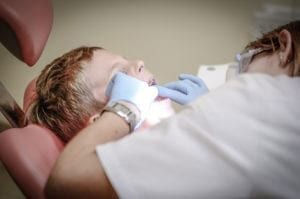Sotos Syndrome
What is Sotos syndrome?
Sotos syndrome is a disorder characterized by a distinctive facial appearance, overgrowth in childhood, and learning disabilities or delayed development of mental and movement abilities.What are the symptoms of Sotos syndrome?
Characteristic facial features include a long, narrow face; a high forehead; flushed (reddened) cheeks; and a small, pointed chin. In addition, the outside corners of the eyes may point downward (down-slanting palpebral fissures). This facial appearance is most notable in early childhood. Affected infants and children tend to grow quickly; they are significantly taller than their siblings and peers and have an unusually large head. However, adult height is usually in the normal range. Other symptoms include:- Macrocrania (large skull) without megalencephaly (large brain)
- Characteristic structural changes in the brain on MRI (extra fluid, midline changes
- High arched palate (roof of mouth is narrow and arched upward)
- Increased birth length and weight
- Disproportionately large hands and feet
- Low muscle tone
- Developmental delay
- Expressive language delay
- Advanced bone age
- Premature tooth eruption, soft enamel
- Poor fine motor control
- Learning disabilities
- Frequent upper respiratory infections
- Behavioral disturbance
What causes Sotos syndrome?
Sotos syndrome is caused by an abnormality (mutation) in the NSD1 gene, and is inherited in an autosomal dominant manner.How is Sotos syndrome diagnosed?
Making a diagnosis for Sotos can often be challenging. Healthcare professionals typically look at a person’s medical history, symptoms, physical exam, and laboratory test results in order to make a diagnosis. The diagnosis of a patient with the typical craniofacial configuration and excessive growth can often be made at the first site. The diagnosis can be confirmed by DNA studies by FISH (fluorescence in situ hybridization) analysis to detect microdeletions or MLPA (multiplex ligation-dependent probe amplification). DNA analysis by sequencing would determine NSD1 mutations.What are the treatments for Sotos syndrome?
The treatment of Sotos syndrome is directed toward the specific symptoms that are apparent in each individual. Treatment may require the coordinated efforts of a team of specialists. There is currently no cure.Where can I find out more about Sotos syndrome?
Sotos Syndrome Articles


After Years of Silence, a Boy With Sotos Syndrome Speaks After Visiting The Dentist
James Moore
October 2, 2018
Read More »






